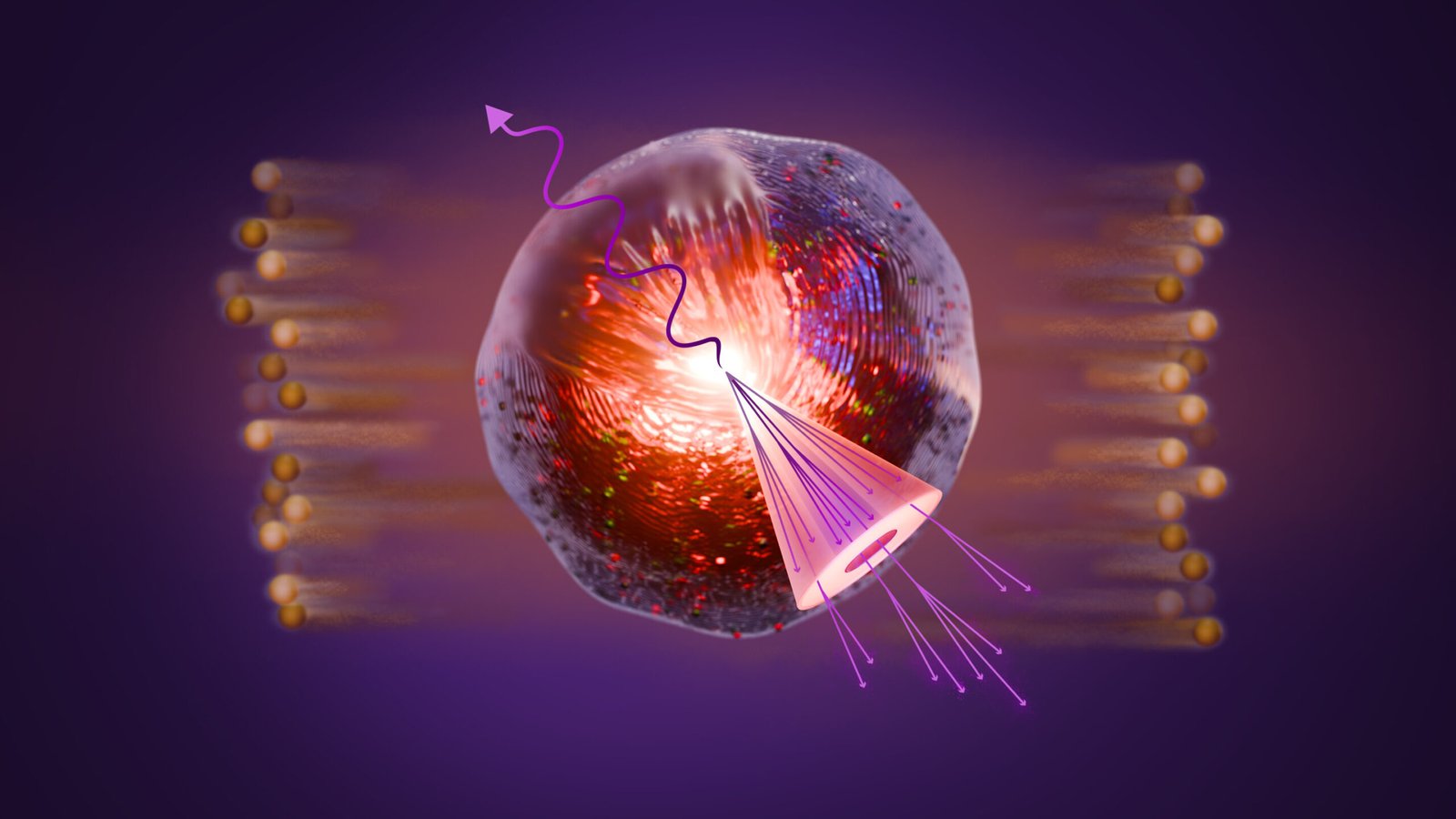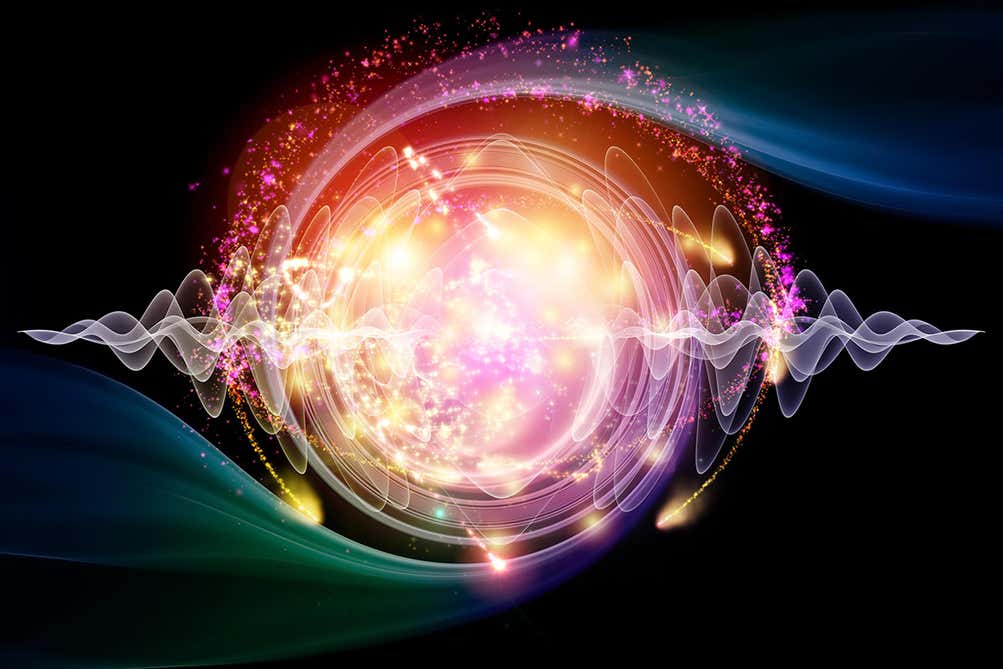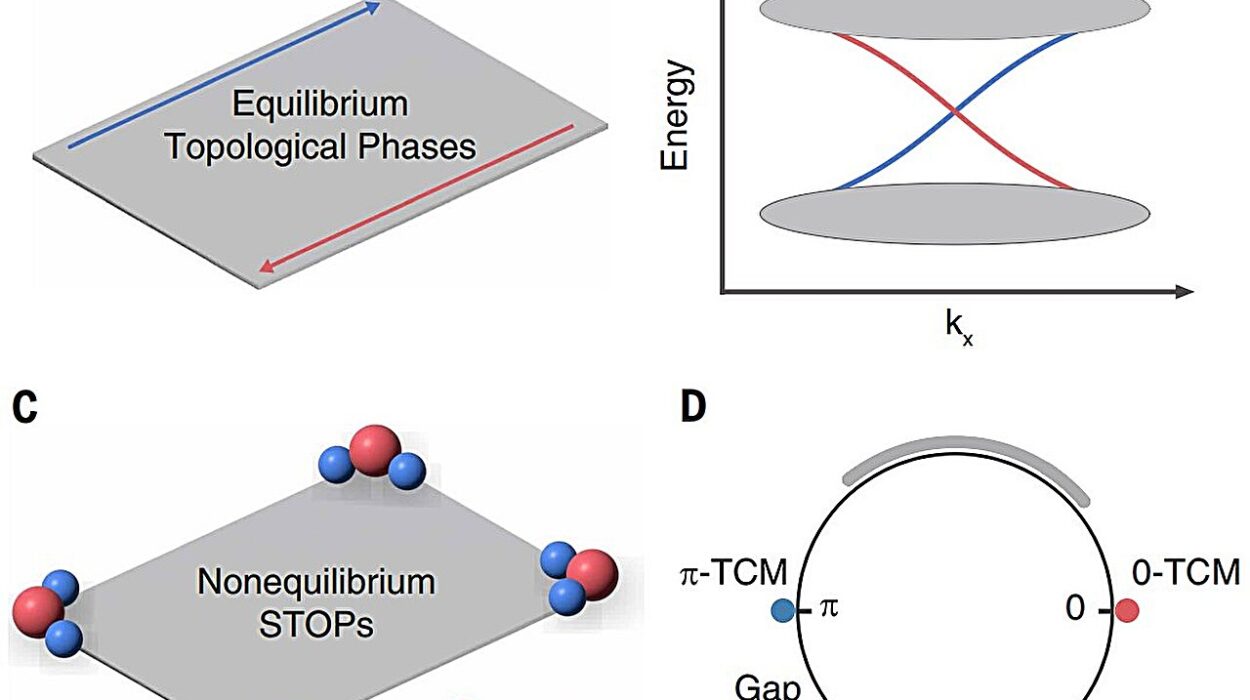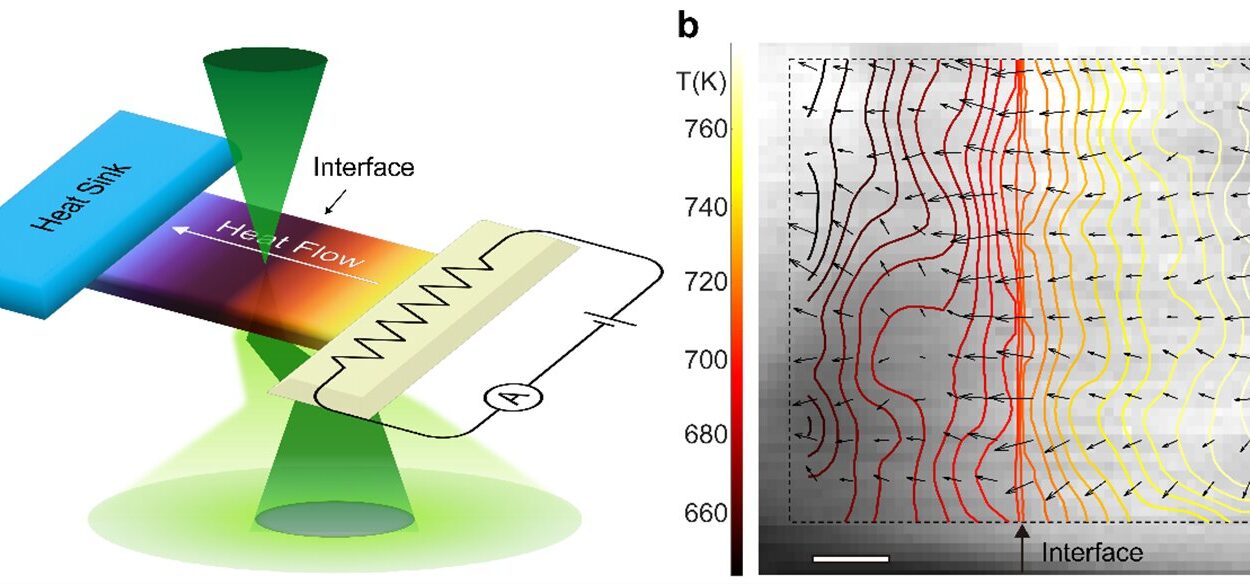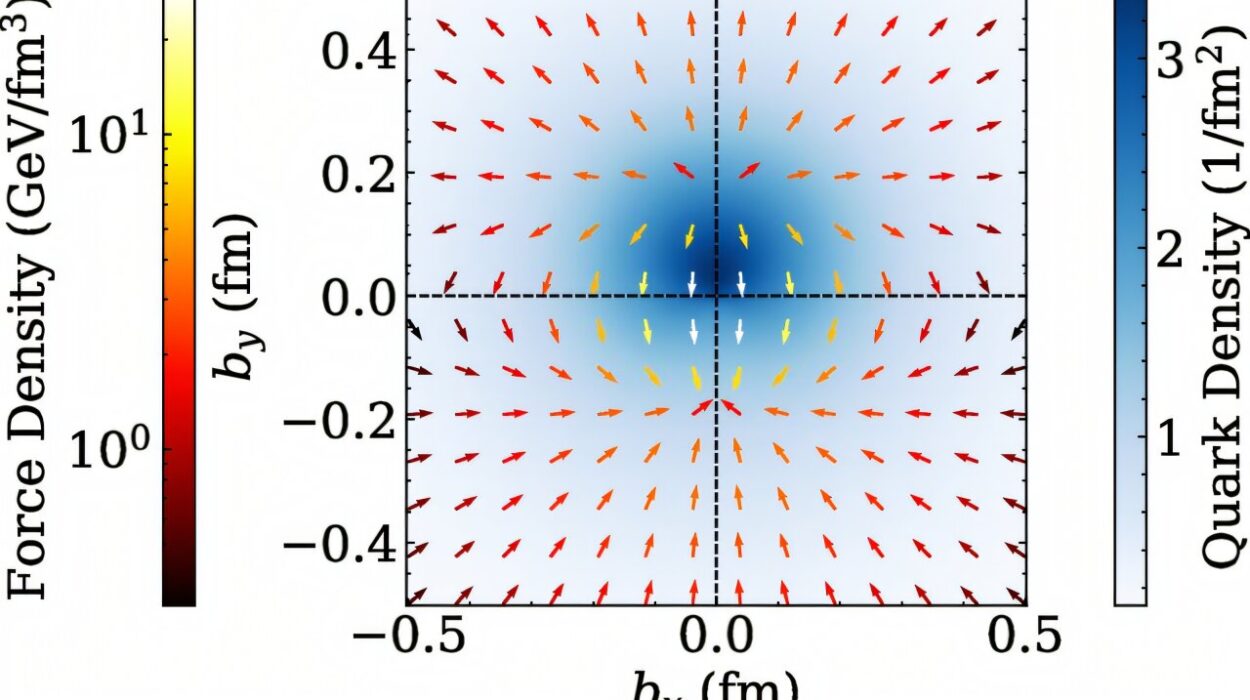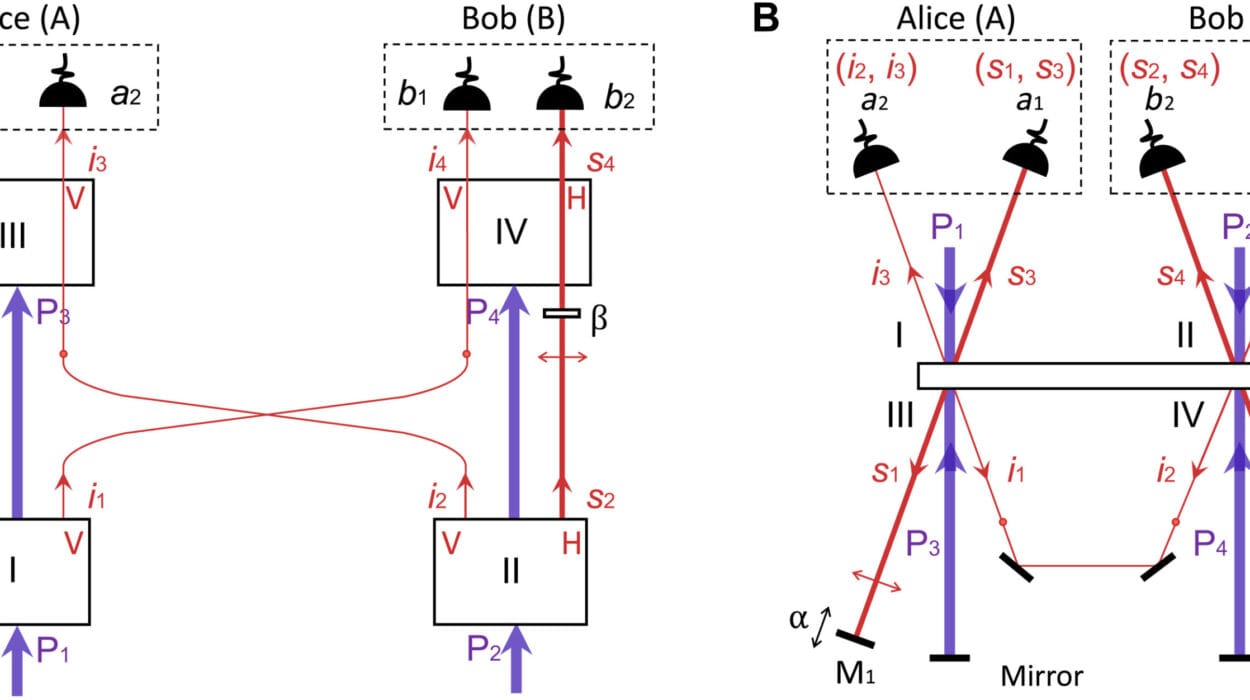Headline:
Scientists Witness Primordial “Sideways Splash” from Quark-Gluon Plasma at RHIC
In a laboratory deep within Long Island’s Brookhaven National Laboratory, where atomic nuclei collide at near light speed, scientists are listening to echoes from the beginning of time.
At the heart of the Relativistic Heavy Ion Collider (RHIC), a machine built to mimic conditions just after the Big Bang, researchers have made a startling discovery. For the first time, they’ve observed how a primordial form of matter—called quark-gluon plasma (QGP)—splashes sideways when struck by a high-energy jet of particles. The finding is a window into a fireball so brief and so exotic that it once filled the newborn universe, and yet it now exists only for trillionths of a second in high-tech experiments like these.
“It’s like riding your bike through a puddle,” said physicist Peter Jacobs of Lawrence Berkeley National Laboratory. “The splash is telling you something. It tells you the water is there. And now, we’re seeing how the early universe splashes.”
A Glimpse of the First Microsecond
The universe, moments after its birth, wasn’t filled with stars, planets, or atoms. Instead, it was a seething, ultra-hot soup of the smallest known building blocks: quarks and gluons. These particles normally don’t roam free—they’re confined within protons and neutrons. But in the inferno of the early cosmos, they were liberated, zipping and colliding in a state of matter so strange and fundamental that physicists have spent decades trying to recreate it.
At RHIC, scientists accelerate gold nuclei to nearly the speed of light and smash them together. For a fleeting moment, those collisions “melt” the protons and neutrons, recreating a droplet of quark-gluon plasma—the same stuff that filled the cosmos less than a millionth of a second after the Big Bang.
The trick is learning how to study something that vanishes before you can blink.
Jet Beams Through the Fire
That’s where jets come in.
When RHIC’s high-energy collisions knock individual quarks or gluons loose, these scattered particles decay rapidly into showers of correlated particles known as jets. These jets, like tracer bullets, carry valuable information about the plasma they pass through. They lose energy, broaden, and change course—alterations that scientists use to probe the plasma’s properties.
“We’re not just asking what happens to the jet,” Jacobs explained. “We’re asking what the jet tells us about the medium it passes through.”
Until now, RHIC’s studies of jets focused on their apparent suppression—a phenomenon known as jet quenching—where jets that should appear simply don’t, or seem weaker than expected. But those studies looked mostly at the jet’s most energetic core, leaving open questions about where the rest of the energy went.
That changed with new data from RHIC’s STAR Collaboration, now published in Physical Review Letters and Physical Review C. This time, the team reconstructed full jets, even those with lower energy, and—for the first time—used back-to-back photons to pinpoint the jets’ original energy.
Using Light to Weigh the Invisible
Photons—particles of light—don’t interact with quark-gluon plasma. They pass through unscathed, carrying away a pristine record of the energy involved in the collision.
“Photons are our cosmic flashlights,” said Saskia Mioduszewski of Texas A&M University, who helped pioneer this technique. “They tell us exactly how much energy was in the collision. Then we can turn around and see what the jet looks like on the other side.”
By comparing the energy of the photon with the jet it was emitted alongside, scientists could see how much energy was lost—and how it was redistributed.
Crucially, the researchers looked not just at narrow jets but also at wider cones, extending up to 30 degrees. That allowed them to catch particles that had splashed out of the jet’s core during its violent journey through the plasma.
What they found was striking: In collisions that created QGP, jets were broader and their energy more spread out than in collisions that did not. In essence, the jets were splashing sideways.
The Splash Heard Across Time
The sideways distribution of energy told researchers something profound: the QGP isn’t just a hot gas. It behaves more like a perfect fluid—one with almost no internal friction and one that flows around obstacles in an almost elegant dance.
And yet, this “perfect” plasma is anything but gentle. When a jet plows through it, the QGP doesn’t just absorb the energy. It reacts, reshapes, and sprays back, like waves crashing against a speedboat.
“Imagine throwing a stone into a calm lake,” said co-author Nihar Sahoo of the Indian Institute of Science Education and Research-Tirupati. “The ripples tell you what the water is like. And in this case, the splashes are telling us about the most extreme state of matter we know.”
By examining the shape and spread of these splashes, the team could measure the distance over which the energy is deposited. The finding? Much of the jet’s energy is recovered within a cone just 30 degrees wide—a number that sets an important constraint on how QGP reacts to outside forces.
Crafting a Cosmic Microscope
Reaching this level of detail required innovations both technical and statistical. The team’s photon-identification algorithm, originally developed by Mioduszewski and former postdoc Ahmed Hamed, helped isolate the direct photons produced in the collision—those born at the same instant as the jet, not from later interactions.
Then, using statistical techniques honed by Jacobs and physicist Alex Schmah of Germany’s GSI Helmholtz Centre, the team separated signal from background noise in the chaotic aftermath of each collision, reconstructing delicate patterns hidden among thousands of flying particles.
Leading the analysis were Sahoo and Derek Anderson, a former graduate student who will soon join Jefferson Lab.
“Identifying the right photons was like finding a needle in a haystack of light,” Anderson said. “But once we did, we could piece together where the jet went, what it hit, and how the plasma splashed back.”
New Questions from the Oldest Matter
The findings reveal more than just splashes—they hint at deeper mysteries still unfolding.
The fact that jets lose energy across relatively short distances could help scientists determine the viscosity of the QGP. If the plasma resists deformation very little, it flows like a perfect liquid—a behavior supported by past studies and now further emphasized by the new data.
And there’s more. Different types of jets, different angles, different energies—all of them offer new clues about how the QGP reacts, evolves, and dissipates energy.
“To really understand this, we need to look at how energy loss depends on things like path length and interaction strength,” Mioduszewski said. “Every new measurement is like another thread in the tapestry.”
A New Era of QGP Exploration
For now, the results mark a milestone: the most detailed view yet of how jets interact with quark-gluon plasma at RHIC. And with upgraded detectors and even more refined techniques coming online, scientists are poised to dive even deeper.
“These are all new measurements,” Mioduszewski added. “And we’re just starting to piece together what they mean.”
The primordial soup of the early universe has long since cooled into stars, galaxies, and life itself. But at RHIC, for the briefest flash of time, it lives again—boiling, splashing, and whispering secrets from the first microsecond of existence.
References: B. E. Aboona et al, Measurement of In-Medium Jet Modification Using Direct Photon+Jet and π0+Jet Correlations in p+p and Central Au+Au Collisions at sNN=200 GeV, Physical Review Letters (2025). DOI: 10.1103/PhysRevLett.134.232301
B. E. Aboona et al, Semi-inclusive direct photon + jet and π0+jet correlations measured in p+p and central Au+Au collisions at sNN=200GeV, Physical Review C (2025). DOI: 10.1103/8b8y-98yh
